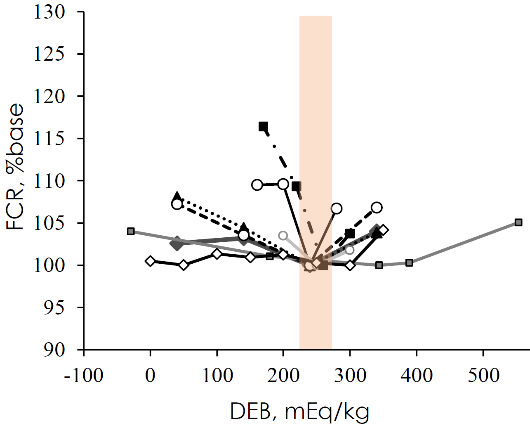> Industry & Business
Why to include sulfur in feed formulation?
Dr Agnès Narcy (INRAe, France) and Dr Steve Leeson (Guelph University, Canada) highlighted the role of electrolytes on animal physiology and poultry production. Excess of dietary anions (Cl, S) to cations (Na, K) induces metabolic acidosis, which is detrimental to animal welfare and performance, bone mineralisation (see https://animine.eu/animals-11/#main) and egg shell quality.
Effect of dietary Electrolytic Balance on weight gain and feed efficiency of broilers :
Under hot temperature which exacerbates the risk of metabolic acidosis, eggshell quality is degraded with reduced dEB values :
At the difference of DCAD (Dietary Cation Anion Difference) equation used in routine for ruminant diets, dEB (dietary Electrolytic Balance) equation used in feed formulation for pigs and poultry did not include sulfur. Current changes in diets for monogastric animals increase the risk of metabolic acidosis and favour the inclusion of sulfate as a variable in dEB calculation. Not only feed ingredients but also feed additives such as amino acids and minerals can significantly influence the supply of anions. Even if it is easy to expect from trace element sources like sulfates and chlorides to be rich respectively in S and Cl, the contribution of chelated sources should also be considered.



